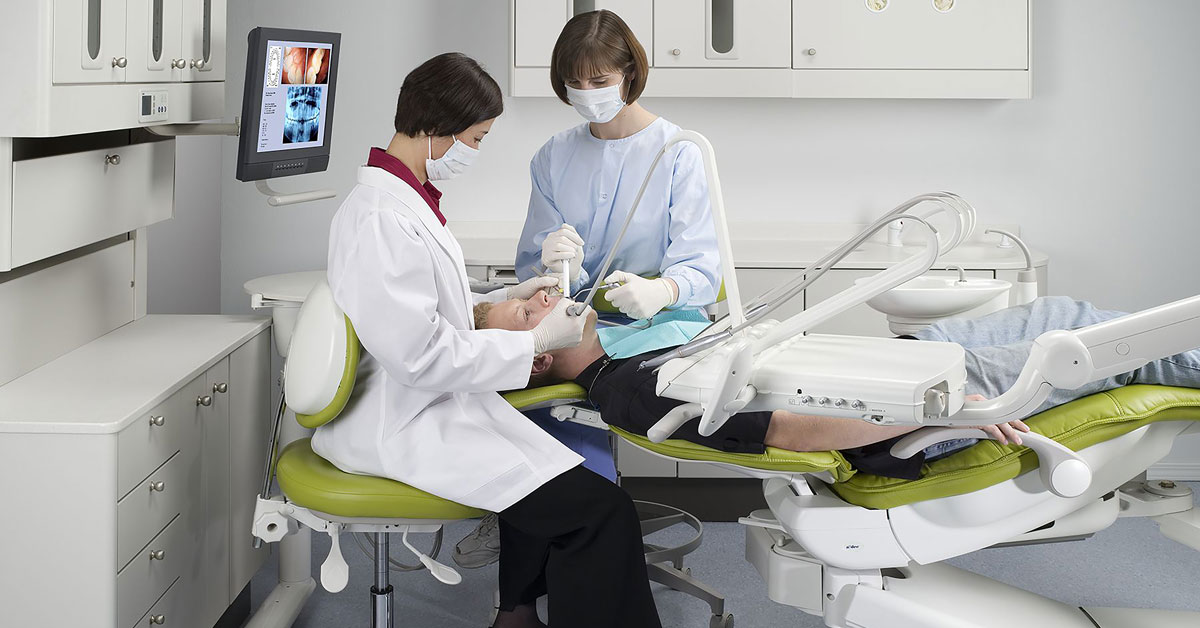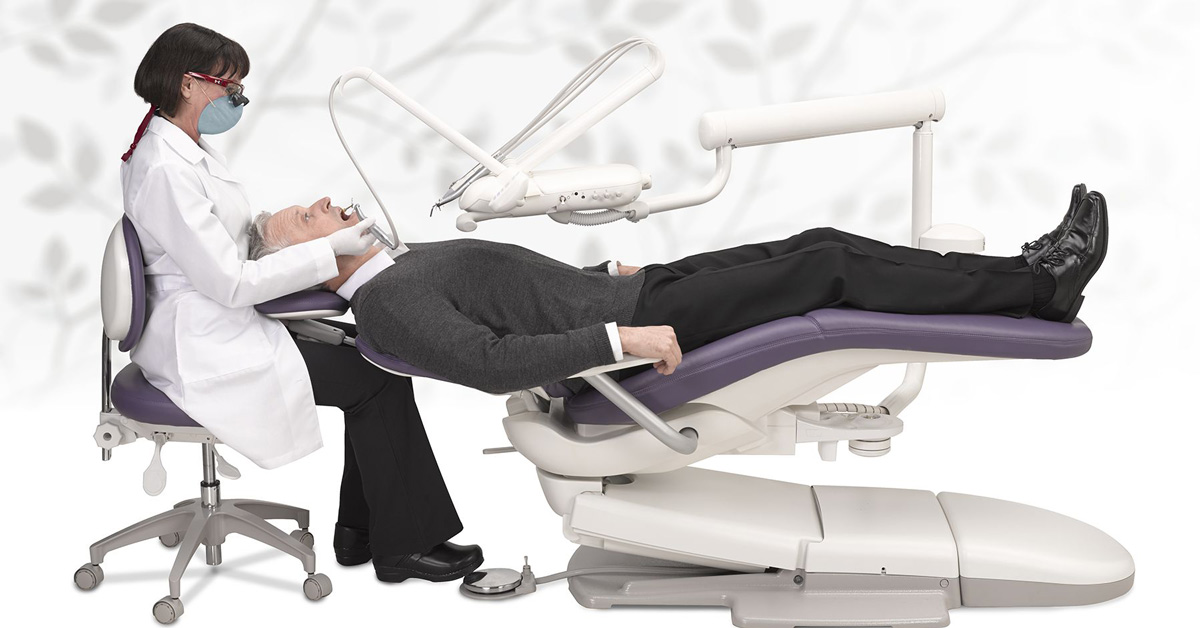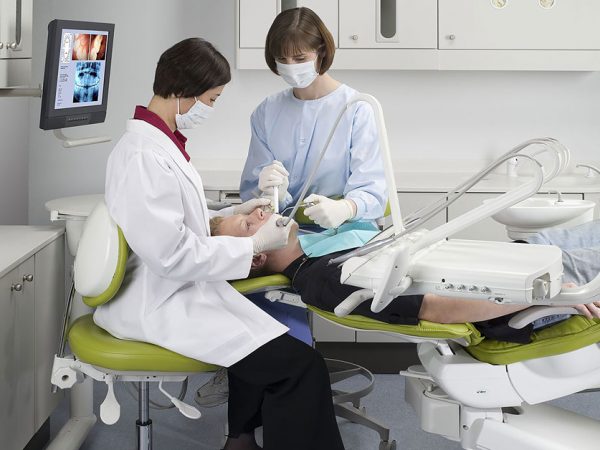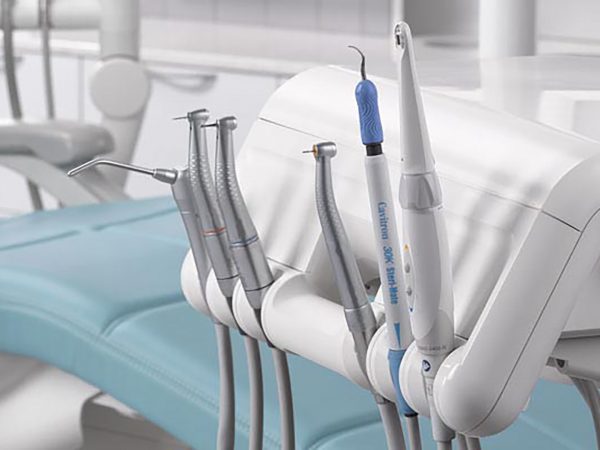Did you know that 87% of dentists (Olive, 2021, p. 4) suffer from back pain? Perhaps you’re reading this thinking, “that doesn’t surprise me!”. But for dentists, back pain is not their only challenge. Neck and shoulder pain, as well as fatigue, are common complaints for dentists. Sure, we know the importance of proper posture and ergonomics, but how do we actually put the theory into practice? What does “proper dental posture” or “dental ergonomics” actually mean? What are the main contributors to dentists’ pain? How can we prevent it? Read on to learn how dentists can reduce strain with proper ergonomics.

What Does ‘Ergonomics’ Actually Mean?
The word ergonomics comes from the Greek words ‘ergon’, meaning ‘work or labour’ and ‘nomos’, meaning ‘natural laws’. Ergonomics studies people’s efficiency in their working environment (Oxford, 2021). When we are working with good ergonomics, we are most efficient in our working environment. In this sense, we are expending the least amount of energy to yield the same result. When it comes to ergonomics in dental practices, this translates to reducing any strain on our bodies while working.
The Weight Of Your Head May Surprise You
The human head weighs 5kg on average. If you were to hold 5kg in your hand, you would soon find it heavy to hold – especially when you place it further away from your body. It can be hard to fathom that we actually hold this weight on our shoulders every day. However, if we were to place the 5kg weight on our shoulders, standing in a neutral position, the weight feels much lighter. In this position, the weight is going through your body to your feet.
It may come as a surprise that our head weighs this much, but our bodies are designed to cope with this weight. That said, the best way to cope with the weight of our head is to support the weight through our core, legs and feet.
Just like how we struggle to hold a 5kg weight out and away from our body, we risk experiencing neck and upper back pain when our head is held away from the centre of our body.
How To Position Your Head
When our head is tilted away from our body, the pressure on our spine, neck and back muscles is magnified. One way to help reduce the pressure on our body is to wear loupes, as these promote a more upright head position.

How To Position Your Patient
Correctly positioning your patient makes a significant difference when it comes to ergonomics in dental practices. To ensure good dental ergonomics, dentists should be utilising a dial articulating headrest on the patient chair.
When we adjust the position of the patient’s head, we can bring about increased patient comfort by offering proper support of their head; while also opening the oral cavity and ensuring full vision of your working area.
To ensure proper ergonomics, your patient needs to be seated fully back against the dental chair before they are moved down into the treatment position. You can help patients with this by presenting the headrest in the fully up position before they sit on the chair.
Dental Depot offers a range of functional, comfortable dental chairs for patients that are engineered with ergonomics in mind.
How To Sit While You Work
A high quality, well adjusted dental stool can make a world of difference in ensuring proper posture and reducing back pain in dentists and dental assistants. Your dental stool should offer a positive tilt, which allows you to transfer some weight through your legs and feet to the ground. With this position, you can transfer pressure from your head to the ground, reducing your risk for back pain. Plus, this position ensures dentists are working at the optimum working height for clearly viewing their workspace without excessively tilting their heads. At Dental Depot, we offer a diverse range of ergonomic dental stools, strategically designed to maximise productivity and minimise any work-related pain.
Ideally, your dental stool should be positioned so your hips are positioned above your knees, with the tilted seat promoting weight transfer to your feet.
When dentists are working at a dynamic seated position, such as at a greater height than they are used to working at, the dentist can adjust their patient’s chair to allow them to get as close as they need to the patient in order to perform their job properly.
The patient chair will likely have a thin backrest to allow you to position your legs under the patient. This will further help you to keep your head above your shoulders at all times.
How To Implement Good Ergonomics In Your Dental Practice
Ultimately, it’s best for dentists to stick to the general rule to keep their head positioned above their body, with their weight transferred to their feet with correct seating position, of both themselves and their patient. At Dental Depot, we take pride in stocking products that have been created to make the dentist’s job easier. Our range of ergonomic dental patient chairs and dental stools are engineered to ensure productivity, functionality and comfort. Be sure to contact our helpful team if you have any questions about our range of products.
Resources
Olive, N. (2021). It’s all in your Head. Smile Dental Journal, 16(1), 4-5.
Oxford. (2021). ergonomics. Oxford Learner’s Dictionaries. Retrieved 2021, from https://www.oxfordlearnersdictionaries.com/definition/english/ergonomics?q=ergonomics



